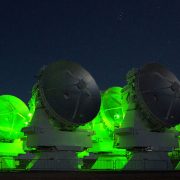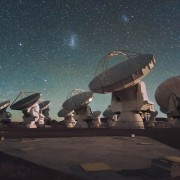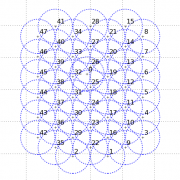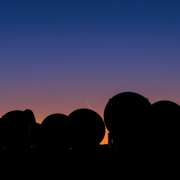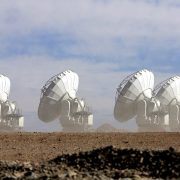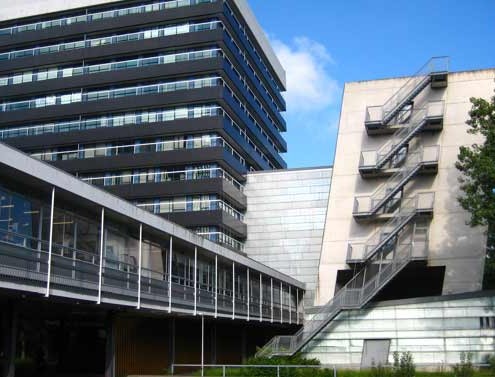The ALMA Observatory announces four filler programs that have been approved on the Atacama Compact Array (ACA), also known as the Morita Array. The programs were designed to fill a gap in the ACA observing schedule in the remainder of Cycle 5 between LST of 22 and 1.5 h. The programs were selected based on input from scientists at the Joint ALMA Observatory (JAO) and the ALMA Regional Centers (ARCs). The proposed programs were reviewed by the ALMA Integrated Science Team (IST) with final approval by the ALMA Director.
The approved programs are:
2017.A.00043.T: Time evolution of CO & H2O in the Martian atmosphere during a large-scale dust storm.
This project will monitor the evolution of CO and H2O in the Martian atmosphere during the recent dust storm.
2017.A.00053.S: ALMA ACA Band-8 observatory project: Mapping fine structure lines of neutral atomic carbon in local bright galaxies
This project will map the spatial distribution of the 492 GHz neutral carbon line in four nearby galaxies. The galaxies and map sizes are listed in the Table.
Galaxy Map size
NGC 7862 125″× 20″
NGC 55 90″× 30″
NGC 660 105″× 30″
ESO 353-G020 55″× 10″
2017.A.00054.S: ACA Observatory Project: SMC Band 6 CO and continuum mapping
This project will map a large area (~ 0.34ox 1o) toward the North bar in the Small Magellanic Cloud (SMC) in 12CO(2-1), H(30) alpha, and the continuum.
2017.A.00056.S:The nature of Planck compact sources at 353 microns
This project will conduct a survey of Planck sources at high galactic latitude in the Band 6 continuum to determine the nature of these sources. These observations could also potentially identify new calibrators for ALMA high frequency observations.
The data from the proposals will be quality assessed by the JAO and released through the ALMA Archive with no proprietary period. Any remaining PI science programs and activities to commission new capabilities on the array will have priority, and therefore the above programs may not be completed in full.
Link to the announcement in the Science Portal:
https://almascience.eso.org/news/alma-announces-new-aca-observatory-filler-programs-for-cycle-5

